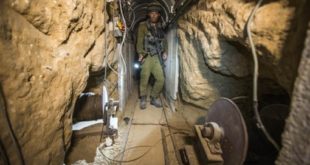Introduction: In the ever-evolving landscape of modern warfare, a new and formidable threat has emerged – Tunnel Warfare. Gone are the days when conflicts were fought solely on open battlefields; today, the battleground extends beneath the Earth’s surface, presenting unique challenges and opportunities for military strategists. As nations grapple with …
Read More »Revolutionizing the Battlefield: 3D Printing’s On-Demand Arsenal for the Modern Military
Introduction: In the ever-evolving landscape of modern warfare, technology is a key driver of innovation. Among the groundbreaking advancements, 3D printing has emerged as a game-changer, providing the military with unprecedented capabilities. 3D printing or additive manufacturing is ongoing revolution in manufacturing with its potential to fabricate any complex object …
Read More »Artillery Systems Modernization and Market Trends
Introduction: Artillery, a historical class of heavy military weapons, has undergone a remarkable evolution, transforming from traditional siege engines to highly mobile and technologically advanced systems. Today’s artillery systems are more accurate, longer-ranged, and more mobile than ever before. This is due in part to the ongoing modernization of artillery systems …
Read More »The Hydrogen Revolution: Fuel Cell Electric Vehicles (FCEVs) Drive Growth
The automotive industry is undergoing a transformative shift towards sustainable transportation, with hydrogen fuel cell electric vehicles (FCEVs) emerging as a key player in the drive towards zero-emission mobility. As governments worldwide implement stringent environmental regulations and set ambitious emission reduction targets, FCEVs present a viable solution for achieving these …
Read More »The Vital Role of Military Logistics in Modern Warfare: Challenges and Innovations
Introduction: In the ever-evolving landscape of modern warfare, military success depends on a combination of strategy, technology, and the efficient management of resources. One often overlooked yet crucial aspect of military operations is logistics that , binds together the complex web of operations. A famous adage, attributed to US Marine General …
Read More »Hybrid Propulsion in the Automotive Industry: Paving the Way for Sustainable Mobility
Introduction In an era marked by increasing environmental concerns and the need for sustainable solutions, the automotive industry is undergoing a significant transformation. One of the key advancements driving this change is hybrid propulsion technology. Hybrid vehicles combine the benefits of both internal combustion engines (ICE) and electric motors, offering …
Read More »Driving into the Future: Exploring the Latest Radar Technologies Revolutionizing Autonomous Vehicles”
Autonomous vehicles have taken the automotive industry by storm, promising a future where cars navigate themselves, reducing accidents and congestion while enhancing transportation efficiency. These vehicles have the potential to revolutionize transportation, making it safer, more efficient, and more accessible. Autonomous control of a vehicle makes driving safer and comfortable. …
Read More »Revolutionizing Military Operations: Insights from the Maneuver Support, Sustainment, Protection, Integration Experiment (MSSPIX
In the dynamic landscape of modern warfare, staying ahead of the curve is critical for military forces around the world. To ensure a decisive edge on the battlefield, the United States Army is continuously exploring innovative technologies and tactics through a series of cutting-edge experiments. One such groundbreaking initiative is …
Read More »Accelerating Towards the Future: Electric Vehicles Ride the Wave of Exponential Growth
Introduction: The automotive industry is undergoing a transformative shift as electric vehicles (EVs) ride the wave of exponential growth. With lower costs, significant technological advancements, and an increasing focus on environmental sustainability, electric vehicles are revolutionizing the way we think about transportation. In this article, we will explore the factors …
Read More »US Army Robotic Combat Vehicle (RCV) program advances
Current Ground combat vehicles, especially main battle tanks (MBT) and infantry fighting vehicles (IFV), are the mainstay of technologically superior armies. The combination of firepower, mobility and survivability allows such vehicles to dominate ground military operations. Now militaries are realizing much of the fighting in future conflicts will take place …
Read More » International Defense Security & Technology Your trusted Source for News, Research and Analysis
International Defense Security & Technology Your trusted Source for News, Research and Analysis





